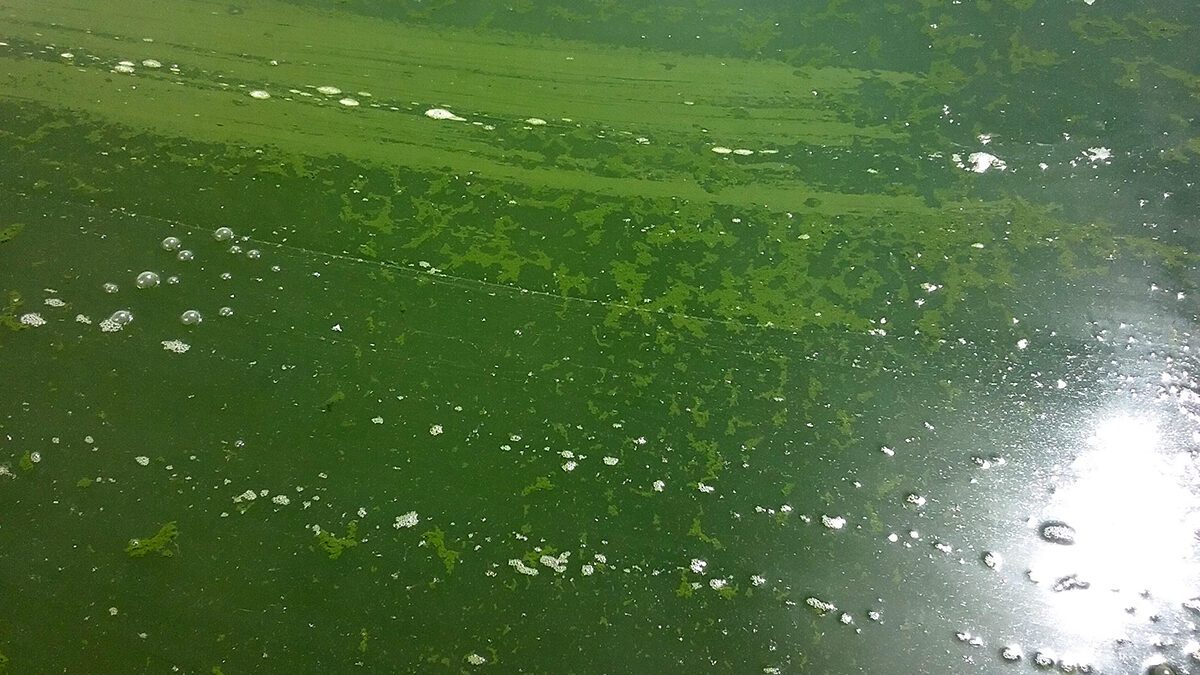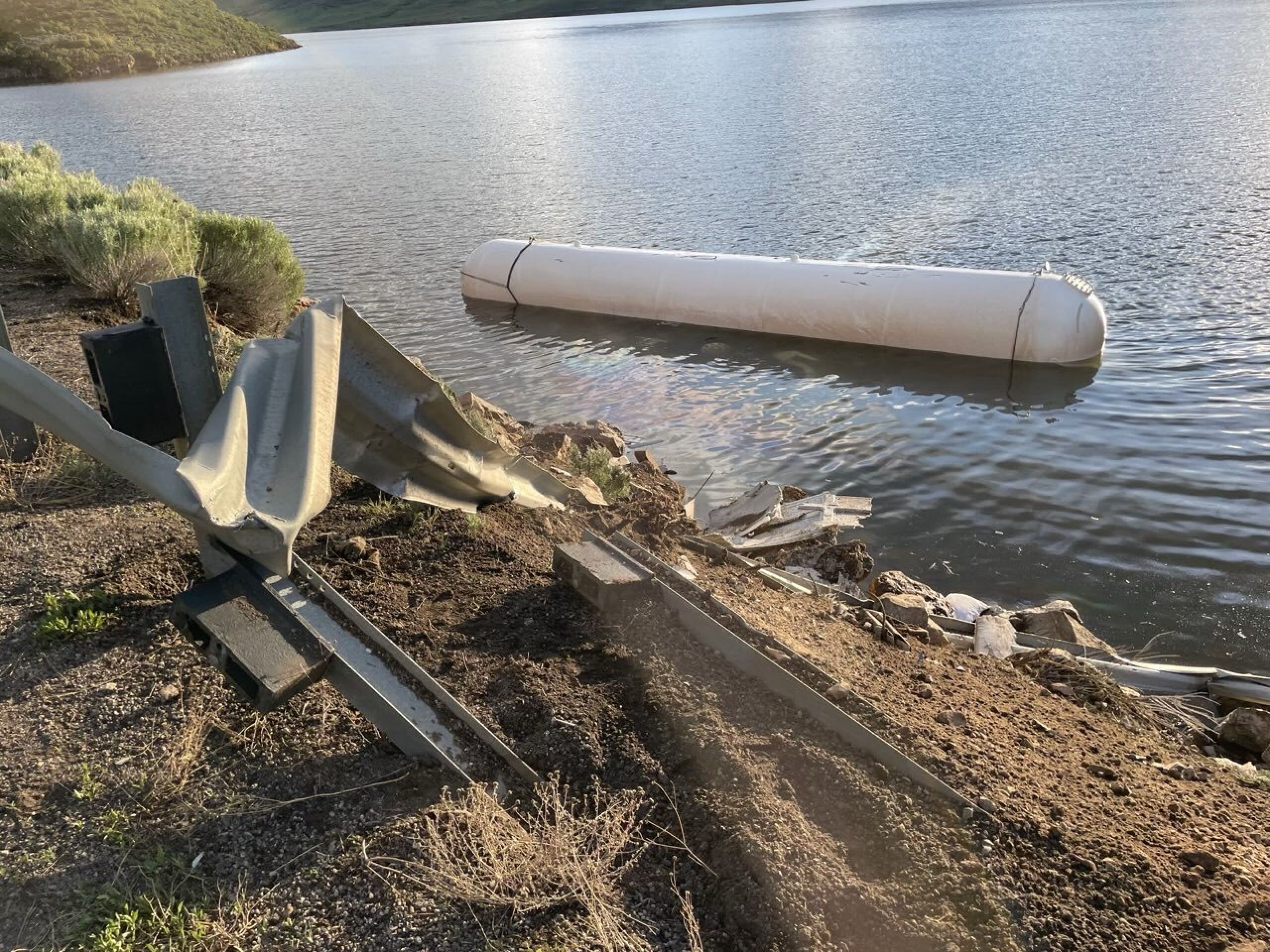Environment
State officials urge caution as algae bloom and pathogen season begins in Utah waters
by Heather Bergeson
Published:

An example of a harmful algal bloom. Photo: Utah Department of Environmental Quality
UTAH — With Utahns flocking to lakes, reservoirs, and rivers to beat the heat, the Utah Department of Environmental Quality (DEQ) is reminding the public to be cautious of harmful algal blooms (HABs) and waterborne pathogens, both of which can pose health risks through the fall.
Harmful algal blooms typically occur from May through October, when warm, nutrient-rich water encourages rapid growth of cyanobacteria, also known as blue-green algae. These blooms can produce dangerous toxins that threaten the health of humans, pets, and livestock. Young children and individuals with weakened immune systems are especially vulnerable.
There are currently no harmful algae advisories in effect for water bodies Summit or Wasatch counties. However, Deer Creek Reservoir has experienced blooms in the past.
Similar Reads On TownLift
Waterborne pathogens, which include bacteria, viruses, and parasites, can also be found in Utah waters and can lead to symptoms such as diarrhea, vomiting, cramps, fever, and rashes. People recreating in these contaminated waters can be exposed through swallowing contaminated water or handling food without washing their hands.
“We want people to enjoy all of the lakes and reservoirs this summer,” said Ellen Bailey from the Division of Water Quality. “Understanding the risks and taking a few simple precautions can go a long way in preventing illness. Check the water conditions before boating, swimming or fishing.”
To stay safe while recreating, the DEQ recommends the following:
Don’t swallow the water
Avoid green, scummy, or foul-smelling water
Shower after recreating
Wash hands with clean water before preparing food
Keep pets out of suspicious water
Clean fish thoroughly and discard the guts
Throughout the recreation season, the Division of Water Quality and local health departments conduct regular water sampling to monitor for pathogens and harmful blooms. Current conditions and advisories can be found at habs.utah.gov, where visitors can also view a photo gallery to help differentiate harmful blooms from harmless algae.
If you see a potential harmful bloom or suspect waterborne illness, call the Utah Poison Control Center at 800-222-1222. To report a bloom, call 801-536-4123. Volunteers can also join the HAB Squad to help monitor local waters.
Similar Reads On TownLift
- TAGGED:
- deer creek reservoir
- Harmful Algal Bloom
- waterborne pathogens
- LOCATION:
- Utah
By: Heather Bergeson
Contact: heather@townlift.com
Heather Bergeson is a writer and editor based in Utah. Heather has written about travel, sports, business and the outdoors for Utah Life magazine, Utah Business magazine and Moab Sun News. She has a bachelor's degree in English and editing from Brigham Young University.
Read more from Heather Bergeson
Submit a news tip, Share a photo or video, or contact TownLift with your local Park City news and feedback.


438 Castle Valley Drive
Castle Valley, UT 84532
80 West 300 North
Salt Lake City, UT 84103
3267 W Deer Hollow Road, Unit 2305
Park City, UT 84060
1511 S Valley View Circle
Springville, UT 84663
2349 S Lava Vista Drive, Lot 32
Santa Clara, UT 84765Talk of the Town
Park City Jobs
Staff Accountant, Surefoot
1 day ago Full time
Office Coordinator, Park City Community Foundation
2 days ago Full time $50,000 - $55,000 yearly
Summit Land Conservancy Programs Specialist, Summit Land Conservancy
2 days ago Full time
Vice President of Finance, Park City Community Foundation
2 days ago Full time $115,000 - $130,000 yearly












